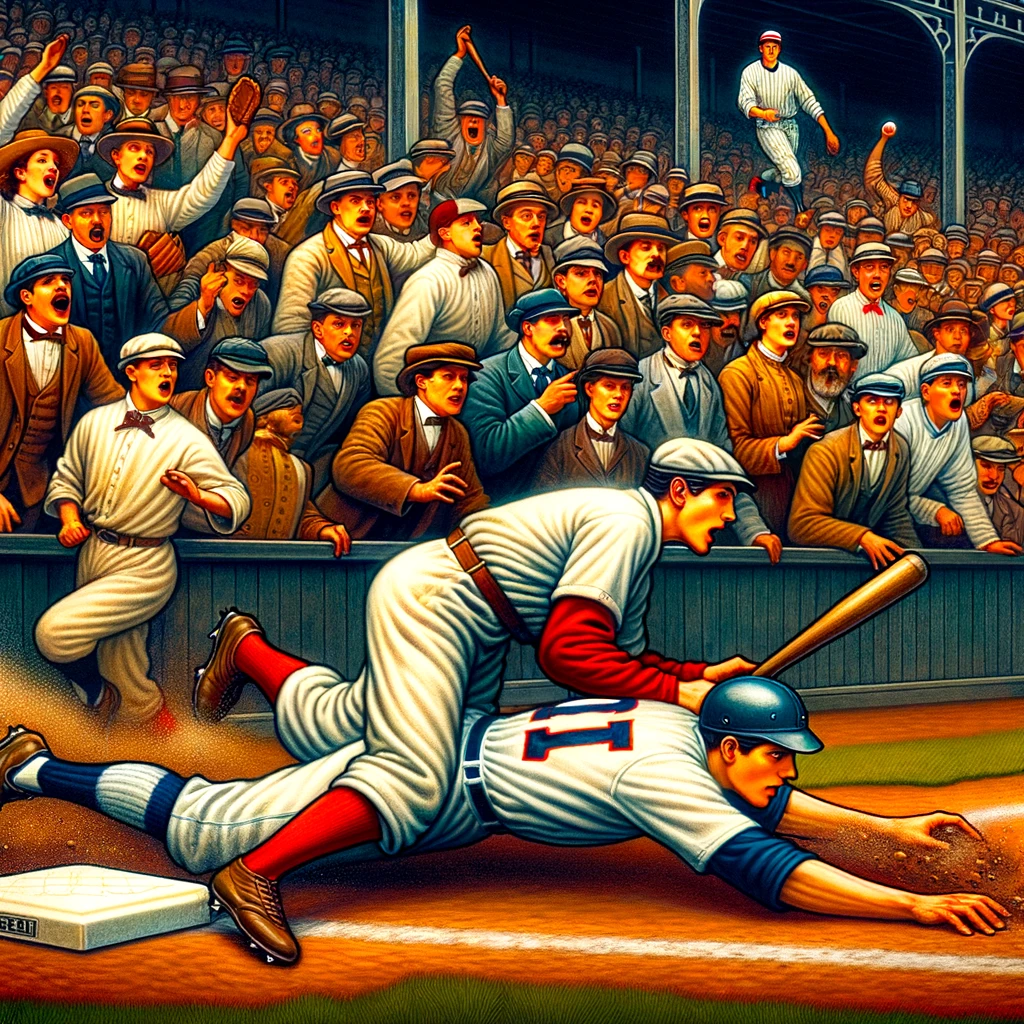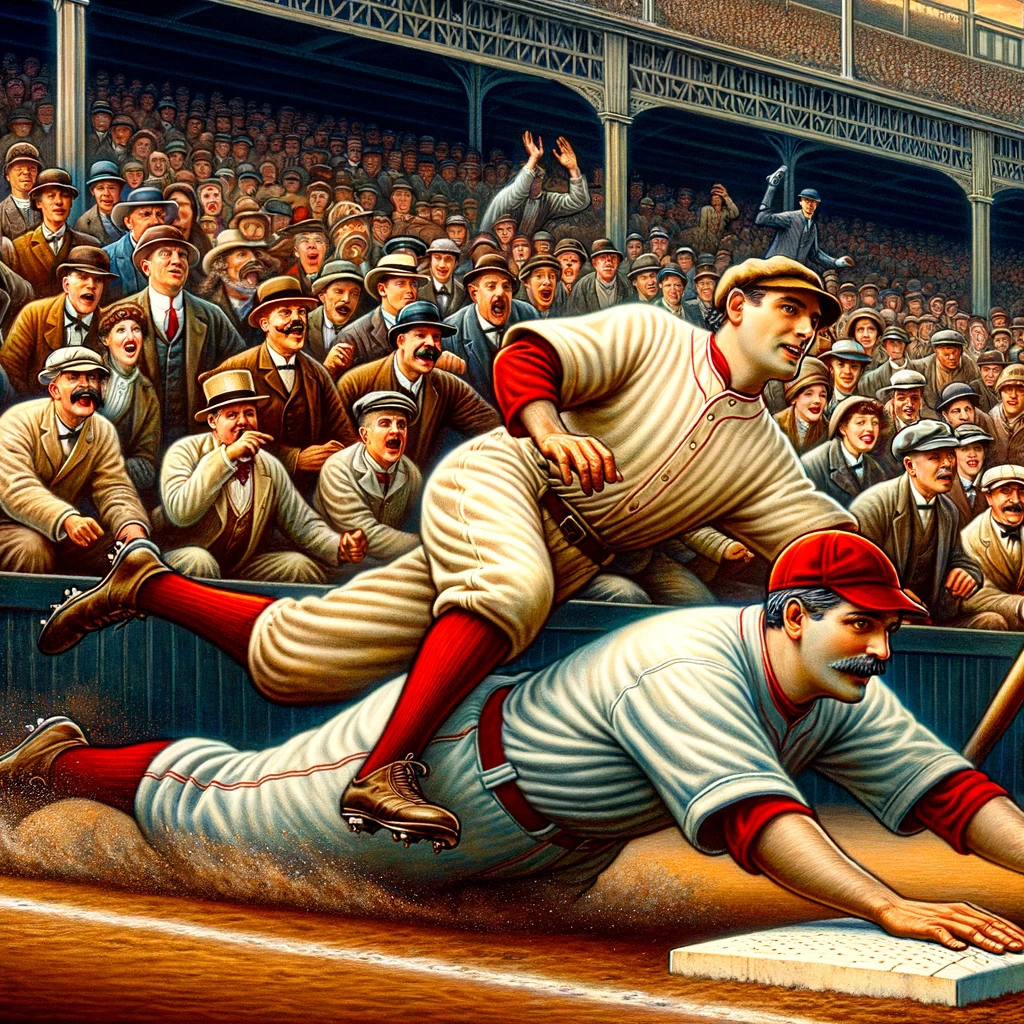Baseball, often referred to as America’s pastime, has a rich and storied history filled with intense rivalries that date back to the early days of the sport. These rivalries, more than just games, have been a testament to the competitive spirit and regional pride that baseball inspires. In this article, we explore some of the most famous early baseball rivalries and the stories behind them.
The Beginnings of Baseball
Before delving into specific rivalries, it’s important to understand the backdrop against which these competitions were set. Baseball’s earliest forms began in the mid-19th century, evolving from older bat-and-ball games like rounders and cricket. It rapidly gained popularity in the United States, particularly in the Northeast.
The New York Game vs. The Philadelphia Game
One of the earliest forms of rivalry in baseball wasn’t between teams, but between styles of play. The New York version of baseball, which would eventually evolve into the modern game, was competing against the Philadelphia version. This rivalry in rules and playing styles epitomized the early struggles for dominance in the sport, with the New York style eventually prevailing.
The National Association and Its Rivalries
The formation of the National Association of Base Ball Players (NABBP) in 1857 marked the beginning of organized baseball. This led to the formation of clubs that would become the cornerstone of early baseball rivalries.
The Brooklyn Atlantics and the New York Mutuals
One of the earliest and most intense rivalries was between the Brooklyn Atlantics and the New York Mutuals. This rivalry was fueled by regional pride and the desire to be recognized as the premier team in the rapidly growing city. Their games drew huge crowds, and the rivalry helped popularize baseball in the urban Northeast.
The Cincinnati Red Stockings and the Boston Red Stockings
Another significant early rivalry was between the Cincinnati Red Stockings, baseball’s first openly all-professional team, and the Boston Red Stockings. This rivalry was marked not just by the games themselves, but also by the movement of players between the two teams, adding a personal dimension to the competition.
The Influence of the American Civil War
The American Civil War (1861-1865) had a profound impact on baseball. Soldiers from different regions played baseball to pass the time, helping to spread the game’s popularity. Post-war, the sport saw a unification of rules and styles, and the rivalries that developed in the post-war period were more structured and organized.
The Chicago White Stockings and the St. Louis Brown Stockings
Post-Civil War, one of the notable rivalries was between the Chicago White Stockings and the St. Louis Brown Stockings. This rivalry highlighted the expansion of baseball beyond the Northeast and its growing national appeal.
The Birth of the Major Leagues
The formation of the National League in 1876 and the American League in 1901 brought a new era of baseball rivalries.
The New York Giants and the Brooklyn Dodgers
One of the most famous early 20th-century rivalries was between the New York Giants and the Brooklyn Dodgers. These teams represented different aspects of New York City’s identity, and their games were often heated affairs that captivated the city’s attention.
The Boston Red Sox and the New York Yankees
Although the Red Sox-Yankees rivalry reached its zenith in the mid-20th century, its roots can be traced back to the early 20th century. This rivalry, fueled by player transactions (most famously Babe Ruth’s sale to the Yankees in 1919), geographic proximity, and a growing fan base, would become one of the most storied in all of sports.
The Impact of Early Rivalries on Baseball’s Popularity
These early rivalries played a crucial role in the growth of baseball’s popularity. They helped to establish a loyal fan base and set the stage for the modern game. The intense competition and regional pride associated with these rivalries drew in fans and created a culture around the sport that persists to this day.

The Role of Media in Amplifying Rivalries
As baseball rivalries grew, so did the role of media in amplifying them. Newspapers of the era frequently covered baseball games, often with a clear bias towards the local team. This coverage played a significant role in building up rivalries, as it stoked the fires of regional pride and competitive spirit.
The Role of Radio and Early Broadcasting
With the advent of radio in the early 20th century, baseball games were broadcast live, reaching a wider audience. This new medium brought the excitement of rivalries into homes across the country, further enhancing their importance and appeal.
Key Players in Early Baseball Rivalries
In any discussion of early baseball rivalries, it is impossible to ignore the impact of key players who defined these matchups.
King Kelly and Cap Anson
Mike “King” Kelly, a star player for the Chicago White Stockings, and Adrian “Cap” Anson, the team’s manager and player, were central figures in many early baseball rivalries. Their prowess on the field and larger-than-life personalities made games involving them particularly compelling.
Babe Ruth and the Yankees-Red Sox Rivalry
Babe Ruth’s transfer from the Boston Red Sox to the New York Yankees in 1919 is perhaps the most significant moment in the history of baseball rivalries. Ruth became a symbol of the Yankees’ dominance and the Red Sox’s “Curse of the Bambino,” a storyline that fueled the rivalry for decades.
Rivalries and the Evolution of Baseball Strategy
The competitive nature of these early rivalries also contributed to the evolution of baseball strategy. Teams sought any advantage they could find, leading to innovations in how the game was played.
The Deadball Era and Strategic Changes
During the Deadball Era (approximately 1900-1919), when balls were used until they were unplayable, strategies focused on small ball—bunts, steals, and hit-and-run plays. Rivalries during this era were often low-scoring affairs, with a premium placed on tactical play and pitching.
The Rise of Home Run Hitting
With the end of the Deadball Era and the rise of players like Babe Ruth, the strategy shifted towards power hitting. Rivalries became showcases for slugging prowess, changing the nature of the game and how teams competed against each other.
The Social and Cultural Impact of Early Rivalries
Baseball rivalries in the early 20th century also reflected and influenced broader social and cultural trends.
Integration and Changing Racial Dynamics
The integration of baseball, beginning with Jackie Robinson breaking the color barrier with the Brooklyn Dodgers in 1947, added a new dimension to existing rivalries. This era not only changed the composition of teams but also played a role in the broader civil rights movement in America.
Baseball and American Identity
Baseball rivalries, with their regional flavors and representation of American values like competitiveness and teamwork, became a part of the national identity. They were a microcosm of the American experience, reflecting its diversity, challenges, and triumphs.
Legacy and Continuing Influence
The early baseball rivalries set the stage for the modern game. They established patterns of competition, fan loyalty, and media coverage that continue to define the sport. These rivalries are not just historical footnotes; they are foundational elements of the baseball narrative.
The Enduring Nature of Rivalries
Today’s rivalries in baseball, while more balanced and less regionally defined, owe much to their early counterparts. The fierce competition, the legendary moments, and the passionate fan bases are a direct legacy of those early days of baseball.
Conclusion
In examining the early rivalries in baseball, we find a tapestry rich with stories, personalities, and moments that have shaped not just the sport, but American culture as a whole. These rivalries were more than mere athletic contests; they were battles of regional pride, showcases of evolving strategies, and reflections of societal changes. They helped to cement baseball’s place as America’s pastime and laid the groundwork for its enduring appeal. As we celebrate the history of baseball, we pay homage to these early rivalries, for they are the roots from which the great tree of the sport has grown.
